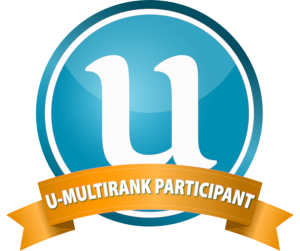.
Latin Terminology
Study Course Description
Course Description Statuss:Approved
Course Description Version:8.00
Study Course Accepted:21.07.2023 08:57:38
| Study Course Information | |||||||||
| Course Code: | LF_043 | LQF level: | Level 5 | ||||||
| Credit Points: | 2.00 | ECTS: | 3.00 | ||||||
| Branch of Science: | Linguistics | Target Audience: | Medicine | ||||||
| Study Course Supervisor | |||||||||
| Course Supervisor: | Dagnija Deimante | ||||||||
| Study Course Implementer | |||||||||
| Structural Unit: | RSU Liepāja Branch | ||||||||
| The Head of Structural Unit: | |||||||||
| Contacts: | Liepāja, Riņķu Street 24/26, lf rsu[pnkts]lv, +371 63442118, +371 63442119, +371 63484632 rsu[pnkts]lv, +371 63442118, +371 63442119, +371 63484632 | ||||||||
| Study Course Planning | |||||||||
| Full-Time - Semester No.1 | |||||||||
| Lectures (count) | 5 | Lecture Length (academic hours) | 2 | Total Contact Hours of Lectures | 10 | ||||
| Classes (count) | 11 | Class Length (academic hours) | 2 | Total Contact Hours of Classes | 22 | ||||
| Total Contact Hours | 32 | ||||||||
| Study course description | |||||||||
| Preliminary Knowledge: | Latvian language. | ||||||||
| Objective: | Acquire knowledge and skills to be able to read, write, use, and explain anatomical and clinical terms; understand the basic rules of the formation of anatomical and clinical terms; use endings appropriately, form and recognize new terms; integrate the knowledge of the Latin language in other courses. | ||||||||
| Topic Layout (Full-Time) | |||||||||
| No. | Topic | Type of Implementation | Number | Venue | |||||
| 1 | Development of the Latin language; its influence on the development of modern languages, common features of the modern languages and scientific terminology. | Lectures | 1.00 | auditorium | |||||
| 2 | Pronunciation: vowels, diphthongs, consonants; pronunciation of Greek borrowings in the Latin language; pronunciation rule of the stressed third syllable. | Lectures | 1.00 | auditorium | |||||
| Classes | 2.00 | auditorium | |||||||
| 3 | Formation of words. Declinations in the Latin language. | Lectures | 1.00 | auditorium | |||||
| Classes | 2.00 | auditorium | |||||||
| 4 | Conjugations in the Latin language. Formation of Simple Tenses in the Active Voice. Forms of the Passive Voice and Imperative Mood. Prescriptions. Terms. | Lectures | 1.00 | auditorium | |||||
| Classes | 3.00 | auditorium | |||||||
| 5 | Adjectives, adverbs, and numerals, their groups and conjugation. Comparative degrees of adjectives and adverbs. | Classes | 2.00 | auditorium | |||||
| 6 | Irregular verbs. Participles. "Gaudeamus" and inspirational quotes in Latin. | Lectures | 1.00 | auditorium | |||||
| Classes | 2.00 | auditorium | |||||||
| Assessment | |||||||||
| Unaided Work: | Acquisition of the noun and adjective forms; acquisition of prefixes and suffixes of the adjective; regular homework on each topic; checking tests and similar tasks in the classroom environment; work with dictionaries, additional material and the Internet sources to get a deeper understanding of the terms. In order to evaluate the quality of the study course as a whole, the student must fill out the study course evaluation questionnaire on the Student Portal. | ||||||||
| Assessment Criteria: | Attendance, participation and quality answers during classes (10%), individual tasks done and handed in on time (10%), tests with passing grades (word identification, correct endings, appropriate writing of the terms, their explanation and classification) (30%). Final exam (50%). | ||||||||
| Final Examination (Full-Time): | Exam (Written) | ||||||||
| Final Examination (Part-Time): | |||||||||
| Learning Outcomes | |||||||||
| Knowledge: | When having acquired the study course programme students are able to: • explain the basic rules of pronunciation of medical terms and their written forms; • recognise and name Latin and Greek prefixes and suffixes; • explain the elements of Greek terms and their meaning; • speak on rules of formation of anatomical and clinical terms and their usage. | ||||||||
| Skills: | When having acquired the study course programme students are able to: • read and write medical terms correctly; • form new words and identify them;. • form and explain anatomical and clinical terms; • classify and compare medical terms; • read Latin terms in prescriptions; • interpret popular Latin quotes, understand their meaning. | ||||||||
| Competencies: | When having acquired the study course programme, students will be able to use anatomical and clinical terms in learning environment and in professional environment. | ||||||||
| Bibliography | |||||||||
| No. | Reference | ||||||||
| Required Reading | |||||||||
| 1 | V. Erte. „Lingua latīna pro medicis: Mācību līdzeklis latīņu valodā”. Rīga, LMA, 1992. (akceptējams izdevums) | ||||||||
| 2 | J. Gorodkova. „Latīņu valoda”. Zvaigzne, 1988. (akceptējams izdevums) | ||||||||
| Additional Reading | |||||||||
| 1 | K. Rudzītis. „Terminologia medica: latīņu-latviešu medicīnas terminu vārdnīca” pārstrādāts un papildināts izdevums. Rīga: Nacionālais apgāds, 2005. | ||||||||
| 2 | A. Zilvestre. „Latīņu-latviešu valodas vārdnīca medicīnas studijām”. RSU, 2011. | ||||||||
| 3 | E. Roba, J. Altemente. „Lingua Latīna pro medicis”. Zvaigzne, 1973. | ||||||||
| Other Information Sources | |||||||||
| 1 | A. Kalme. „Per aspera ad astra” - Latīņu spārnotie teicieni. Zvaigzne ABC, 2008. | ||||||||


